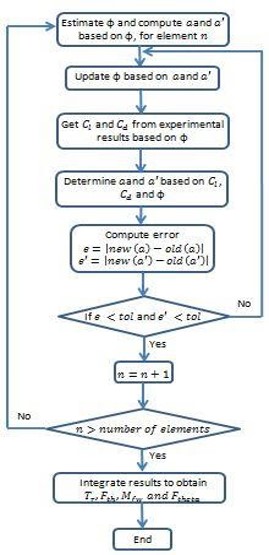The aerodynamic performance of the TAD was analyzed using the Blade Element Momentum (BEM) theory [1, 9, 10]. The BEM approach is an efficient technique for computing aerodynamic loads on the wind turbine rotor. The procedure neglects some losses that can limit the accuracy of the results. However, this can be amended through the application of correction factors, which were applied to this work. The accuracy of the results was validated by comparing output from this model to data from National Renewable Energy Laboratory (NREL) Unsteady Aerodynamics Experiment Phase VI experimental wind turbine. This experimental model employs the same rotor and S809 blade design used for the BEM model in my work. The study characterized the range of transformations required for the adaptive blade. The aerodynamic design increased the power coefficient by 3.8 and 3.3% at the cut-in and rated speeds, respectively. The mechanical design was able to increase the efficiency by 3.72 and 2.93%, which is significant for wind energy production. An additional simulation run with the AWT-27 turbine model showed a remarkable improvement of up to 13% at the rated speed.

Procedure for finding aerodynamic loads with BEM
1. Khakpour Nejadkhaki, H. and J.F. Hall, Control Framework and Integrative Design Method for an Adaptive Wind Turbine Blade. Journal of Dynamic Systems, Measurement, and Control, 2020. 142(10).
9. Mou, F., et al., Weighted Least Squares Approach for an Adaptive Aerodynamic Engineered Structure With Twist Transformation. Journal of Energy Resources Technology, 2019. 141(5): p. 051207-051207-11.
10. Hamid Khakpour Nejadkhaki, J.F.H., Modeling and Design Method for an Adaptive Wind Turbine Blade With Out-of-Plane Twist. Journal of Solar Energy Engineering, 2018. 140(5): p. 9.
